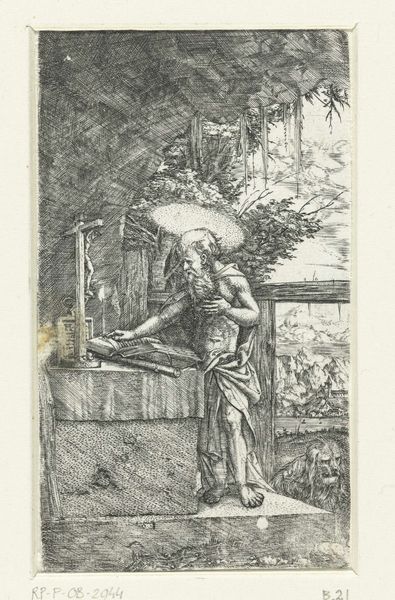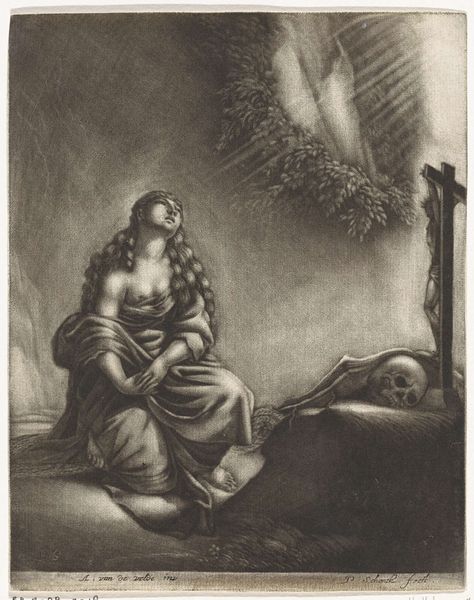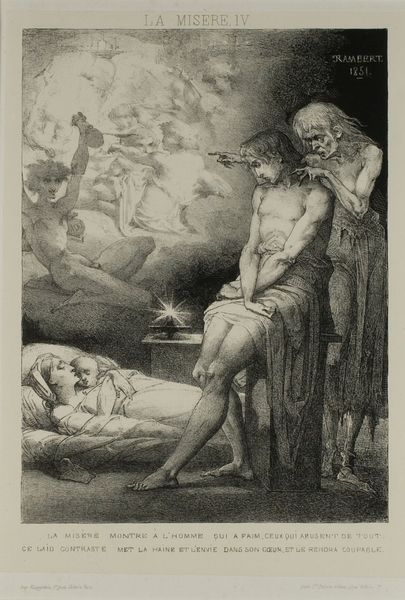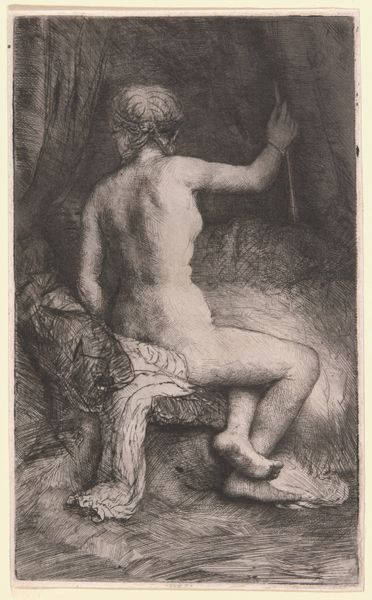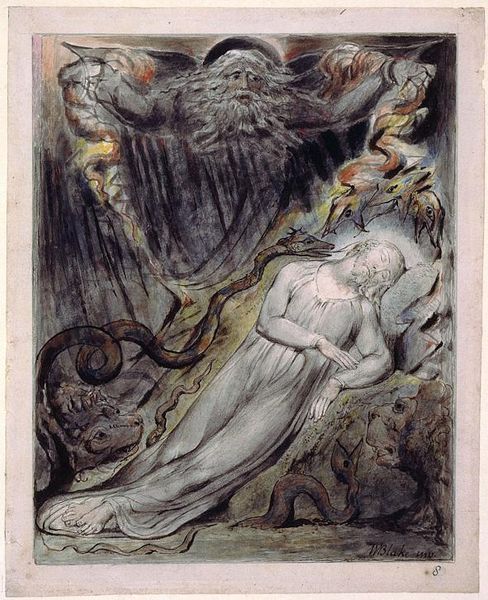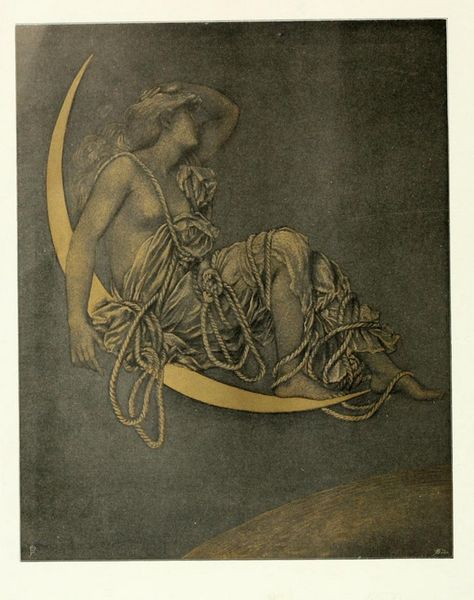
Dimensions: 237 × 170 mm (image); 268 × 197 mm (primary support); 433 × 297 mm (secondary support)
Copyright: Public Domain
Charles Rambert created Plate Eight from Misery in 1851, using etching and engraving. These processes begin with a metal plate, often copper or zinc. The artist covers the plate with a waxy, acid-resistant ground. Rambert then uses a sharp needle to draw an image, exposing the metal. Immersing the plate in acid etches the lines. For engraving, a tool called a burin directly cuts lines into the plate. Ink is applied to the etched or engraved lines, and the surface is wiped clean. Finally, the plate is pressed onto paper, transferring the image. Here, the stark contrasts, achieved through the fine lines and tonal gradations of etching and engraving, amplify the emotional weight of the scene. The work involved, cutting line by line, shows Rambert’s engagement with the subject, and the amount of work involved reflects the social themes of labor and suffering, underscoring the direct relationship between process and meaning.
Comments
No comments
Be the first to comment and join the conversation on the ultimate creative platform.
